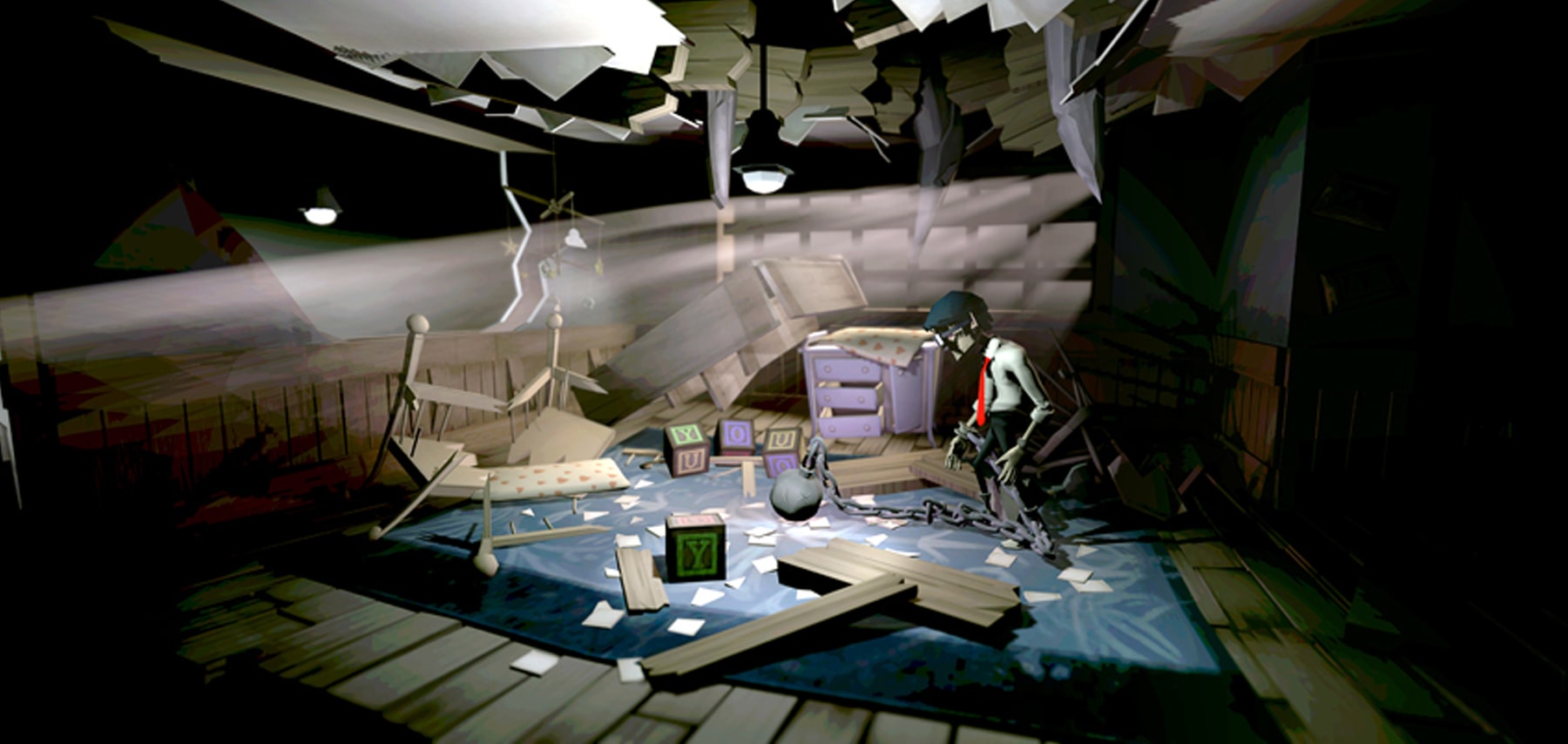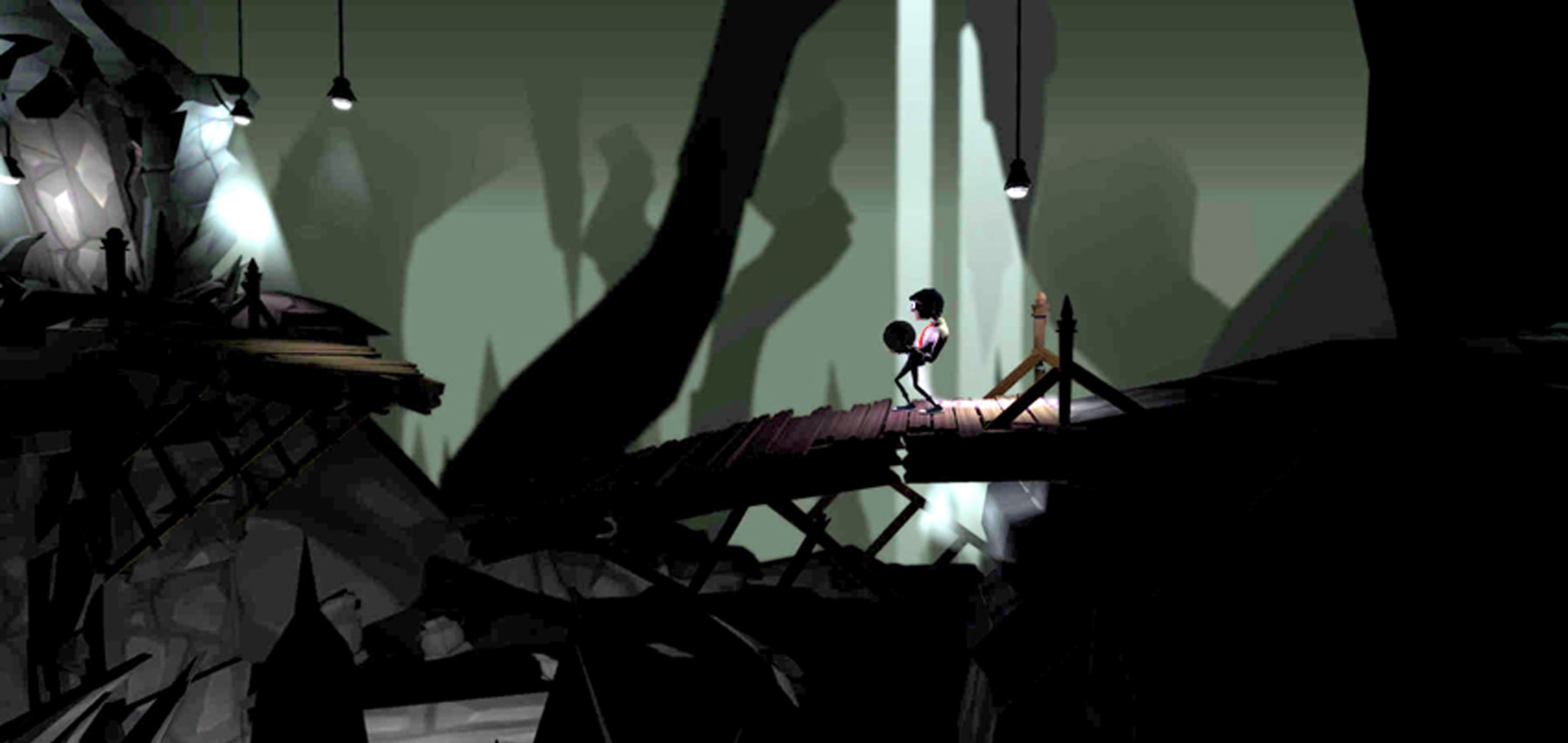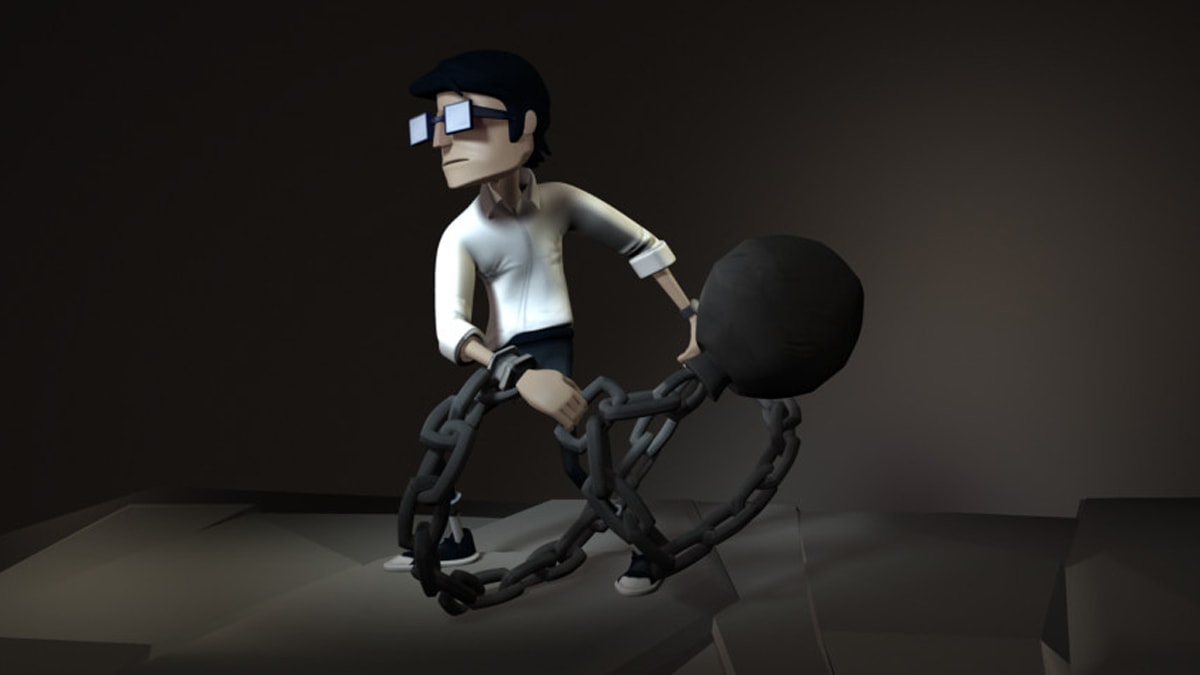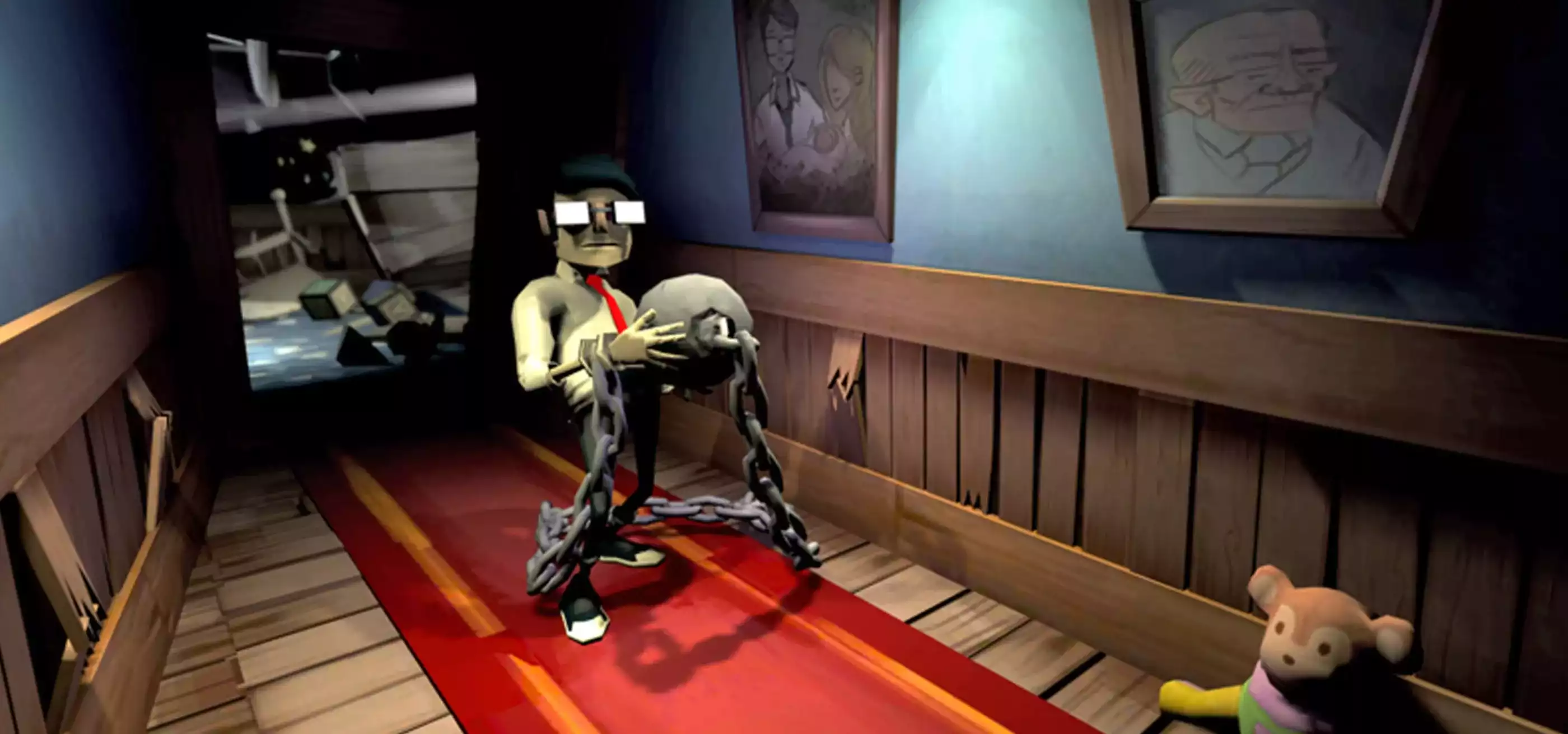A young man in a shirt and tie wakes up face down on a living room rug, a ball and chain shackled to his wrist. Try as he might, he can’t seem to escape from the ball, so he carries it with him — uses it to crash through a boarded-off hallway entrance.
As he makes his way through his dilapidated home, areas of the floor and ceiling give way to craggy spikes and stalagmites until he comes to a dead-end room. Then, as he hurls the ball at a target on the wall, an entire section of the house crumbles and falls downward, revealing a vast cavern in the wake of his destruction.
Thus marks the opening moments of Chained, recently voted as the “Best Senior Game” at the 2014 DigiPen Game Awards. Developed by Those Guys — a team of student designers, artists, and programmers — it’s a surreal and symbolic cautionary tale that attempts to explore the nature of negative dependency through its ball-and-chain mechanic.
As game designers, we’re always interested in trying to figure out how to better combine narrative and gameplay experiences.”
For Jonathan Gregoire, the game’s director and 2014 graduate of the B.S. in Computer Science and Game Design program, the idea for Chained emerged from a desire to create something outside the norm for his senior project.
“As game designers, we’re always interested in trying to figure out how to better combine narrative and gameplay experiences, and how to create emotion for the player,” Gregoire says. “And so it started off with just the idea of creating a game about a character who is addicted or who feels lost. And the player feels weak, and they have to drag something along with them.”
One of the team’s first design tasks was in brainstorming how to incorporate a ball and chain into a set of playable mechanics — such as swinging, climbing, and using the object as a literal wrecking ball.
From there, it was matter of building level sequences that could strike the right thematic balance between frustration and enjoyment.

“We wanted the initial feeling of frustration when the player has to pick up and use this ball, because it’s slow and heavy. They can’t get away from it. But then once they start using it, they’re like, ‘Oh, cool, I can break down this wall!’” Gregoire says. “We wanted to make sure that players felt that connection with the ball. Like, ‘Yeah, it’s helping me get through.’ But it’s also destroying these things that were important to your (character’s) life at one point.”
Throughout the course of the game, players notice visual clues in the environment — from family portraits on the walls to scattered moving boxes — all hinting at a larger backstory of domestic turmoil.
We wanted the initial feeling of frustration when the player has to pick up and use this ball, because it’s slow and heavy.”
But just what is the main character’s ball and chain meant to represent? Is it a drug addiction, anger issues, a gambling habit that has estranged him from his family?
For Gregoire and the team, it could be any or none of those things.
“Other people are going to interpret it other ways, and that’s what we want,” Gregoire says.
In Gregoire’s view, the ball and chain could be a stand in for any type of negative dependency, a depiction of the way in which human beings sometimes struggle to let go of the things they think they need.

“As people we have all these different ways of coping with our environment or our world,” Gregoire says. “But some people choose to go one way and stick to that — and then forget and leave everything else behind.”
The feedback we got from players was just, ‘Yes, this is something.’”
Gregoire, who came up with the original concept during the summer of 2013, says he was initially skeptical about whether his idea had merit, but it was fellow game design student and lead level designer Brandon Anderson who helped convince him to start a game team during the fall semester and give it a shot.
Luckily, he wasn’t the only one who liked the idea.
“As soon as we got something playable, we sent it out to the players and we just said, ‘Hey, we know this doesn’t work. It’s buggy. It doesn’t look good yet. But is this interesting?’” Gregoire says. “And the feedback we got from players was just, ‘Yes, this is something. This is really interesting. I want to see more of this.’”
In addition to winning for best senior project game, Chained received awards for “Most Poetic Experience,” “Best Characters,” and the third-place prize for the best DigiPen game of the year. (Update: Chained was recently selected as a Gold winner in the “Games for Good” category at the International Serious Play Awards.)

Chained was developed by Brandon Anderson, game designer; Jonathan Everist, sound designer; Anne Feeny, artist; David Fenton, programmer; Decker Geddes, artist; Jonathan Gregoire, designer; Hojun Lee, artist; Keith Leiker, producer; Adrian Orszulak, programmer; Adam Purvis, artist; David Scamehorn, level designer; and Hans Wagner, programmer.
